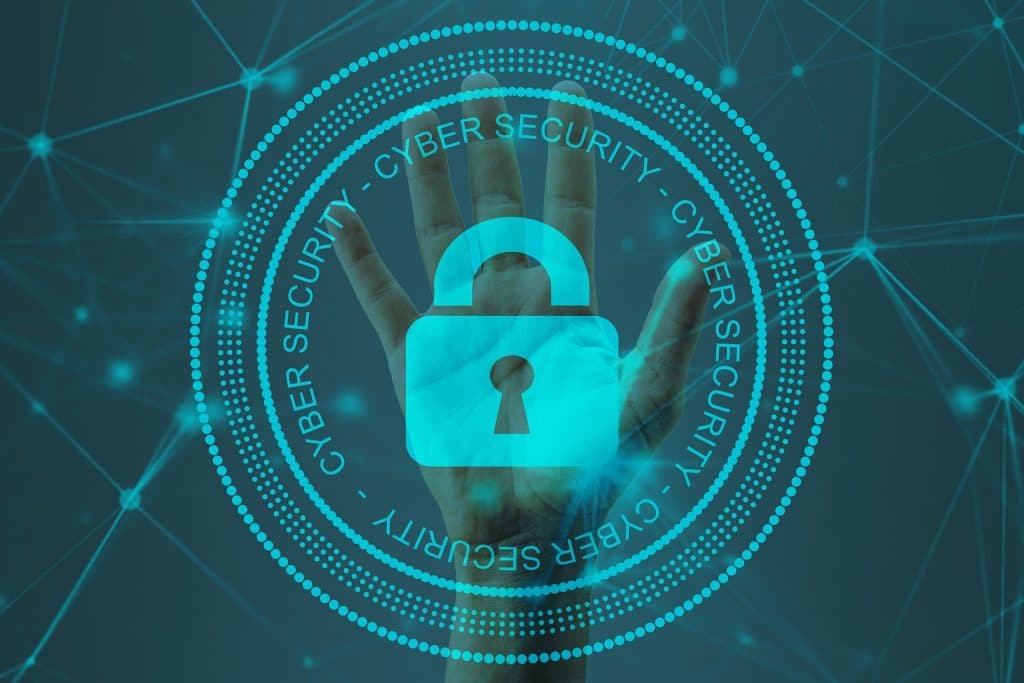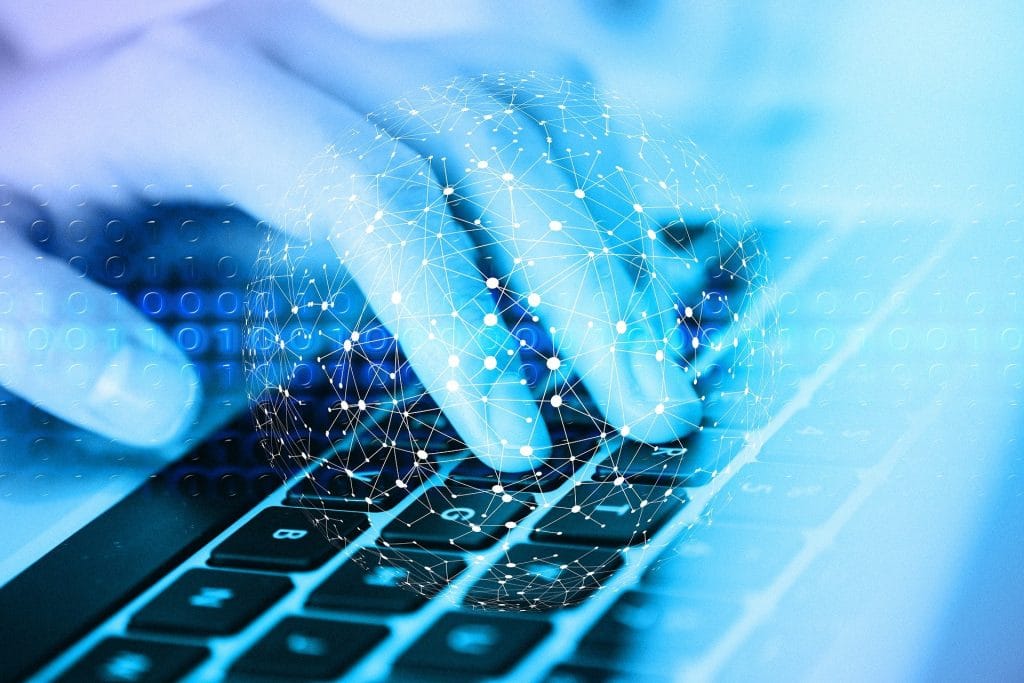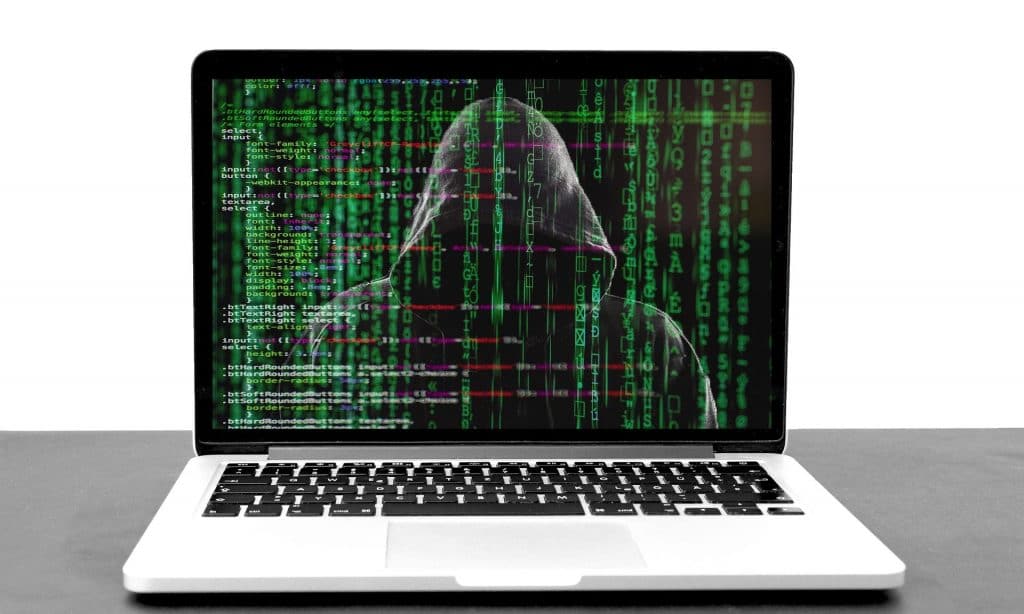Cybersecurity Beginner’s Guide
Cybersecurity is something that didn’t even exist 40 years ago. As the world makes a bigger digital footprint, the need for cybersecurity has been more understood. Cybersecurity improves the lives of anyone who uses a phone, tablet, or computer.
Let’s take a closer look at cybersecurity. We’ll outline why it’s important, how you can make your career in this field, and what happens if cybersecurity is overlooked. But first, what is cybersecurity?
What is Cybersecurity?
The best way to think about cybersecurity is by imagining that it’s a security guard for computer activities. Cybersecurity is different technologies, programs, and ideas that protect people and companies. It keeps information safe that’s stored on a computer, on the internet, or any device. Cybersecurity jobs are aimed to stop cyber attacks and cyber crime.
The main focus of cybersecurity is to keep personal information out of the hands of other people. It protects not only your online presence but also your local computer. Any electronic device relies on cybersecurity to keep it operational and keep the user safe.
Cybersecurity is a general term and has a lot of niches under it. A varying salary for cybersecurity accompanies each niche.
Network Security
This is the act of keeping a network of computers safe. Most often, it’s a workplace that has multiple computers and servers linked up. The cybersecurity expert will make sure only the right people can access these networks.
If network security is compromised, the wrong people can access vast amounts of personal, confidential, and dangerous information. The impact of a network security breach depends on what types of data are stored on the network.
Data Security
Someone working in data security will make sure that data is safe at all times. Sending, receiving, or storing information is all part of this category. Often, a company will hire someone to secure their data as well as their customers.
This is a more general form of cybersecurity. Several careers employ this type. It’s also one of the most important types of security for any company.

Application Security
Application security is referencing the apps that can be downloaded on a smartphone or tablet. The prevalence of mobile banking and in-app purchases requires a lot of security to keep financial information secure. Most often, attacks on an app are aimed at stealing customer information.
This type of security needs a good understanding of different operating systems and how to protect them. A specialist in this field understands how to keep cybercriminals out through a variety of different techniques.
Informational Security
Similar to data security, information technology security protects all physical and digital information. This is broader in the sense that it could be any kind of information. The key distinction is that information security also applies to physical documents.
Someone working in informational security might be asked to protect a physical room on-site, data on the cloud, and information stored on the network or server.
Operational Security
Operational security, also called OPSEC, is another common form of cybersecurity. This form not only determines what information is critical, but it will also figure out ways to keep the data safe and controlled. OPSEC is often used to keep information away from competitors or enemies of nations.
OPSEC is especially important in government agencies and contract companies. People who work in OPSEC spend a lot of time and energy giving information to the staff and teaching them how to protect their information.
Elements of Cybersecurity
There are a lot of things at play when you think about a successful cybersecurity framework. Professionals in this industry have many elements that they have to focus on to keep the operation safe. Most of these elements are considered and mitigated through cybersecurity management.
Let’s take a look at some of the more popular ones.
Endpoint Security
Endpoint security is the act of protecting access through end-users. This could pertain to laptops, desktops, and mobile devices. Endpoint security makes sure that no malicious attacks come through these access points.
Identity Management
The overall goal of identity management is to make sure only the right people can access specific files, networks, and drives. This element seeks to establish who should have access and control their different digital identities.
One user may have numerous accounts that represent them, so it can become difficult.
Database and Infrastructure Security
Companies need to focus on database and infrastructure security to keep everything safe. The database is the conglomerate that makes up a company’s digital fingerprint. Any applications, files, servers, and networks fall into this category.
Cloud Security
As we become more digital, we operate in the cloud more often. Cloud security protects these platforms from leakage, theft, and deletion. This element of cybersecurity is specifically focused on the cloud.
Mobile Security
Mobile security is what you might think it is. This sector of cybersecurity keeps your smartphones, portable computers, and laptops safe from prying eyes. It is more focused on eliminating threats and vulnerabilities coming in and attacking your device.
Disaster Recovery/Business Continuity Planning
The process of disaster recovery and business continuity planning prepares you for the worst. This is sort of like an emergency preparedness process that helps you after going through a cyberattack.
Even in cybersecurity, sometimes things slip through the cracks. The best practice is to make sure you have a continuity plan should something happen.
End-User Education
In most cyber applications, the weakest link is the user. Taking care of end-user education is critical in these cases. You could have the most robust cyber system, but you could experience a cyberattack due to someone taking advantage of an end-user at the end of the day.
End-user education teaches the user about the various risks of cyberattacks. For example, training employees about phishing scams will minimize the risk of them falling for one.
Data Loss Prevention
Data loss prevention (DLP) is making sure the end-users don’t send any information outside of the network that is critical.
Some systems will have administrative controls set up that disallow the user from sending certain information. Similar to end-user education, DLP acts by empowering the human aspect of your cyber system. This risk management element will protect you in the case of advanced persistent threats breaking into your network.
Intrusion Detection System
An intrusion detection system (IDS) is the alarm for your computer network. It can be a physical device or a digital program or app that monitors the network and system. If there are any malicious attacks or attempted cyberattacks, the IDS will warn administrators.

Cybersecurity Threats
The most common cybersecurity threat is called a cyberattack. There is a wide range of different cyberattacks. These attacks target the ICA or integrity, confidentiality and availability of the end-user.
As computers and the internet develop, hackers and cybercriminals have different opportunities to attack unsuspecting people or businesses.
As hackers find new ways to attack us, cybersecurity experts have to find ways to stop them. This is why people working in cybersecurity have to always stay up-to-date with their practices and knowledge.
Let’s learn more about some of these malicious threat types.
Hacking
Just like you’ve seen in the movies, hacking is a form of threat where the cybercriminal exploits different ways of getting into a private network or system.
Some companies will hire a hacker to break into their system to highlight weaknesses and develop fixes for these holes.
Hacking attacks could be looking for personal information, looking to leak information from a secure database, or trying to take a computer hostage for money.

Trojans
An old Greek story inspires the name Trojan. Greeks constructed a large hollow horse that was filled with Greek soldiers. They gifted this horse to their enemies in the war, the Trojans.
The Trojans happily accepted this gift and brought it into their heavily-fortified gates. Upon entrance, the Greeks came out of the horse and attacked the Trojans.
In this cyberattack, hackers will disguise their malware as a legitimate piece of software. The computer will happily accept and download the file and therefore give hackers complete access.
Phishing
Phishing is perhaps one of the more common methods of cyberthreats nowadays. The attacker will trick you by pretending they’re someone they’re not. They will manipulate you into giving them information or money. General data protection regulation will not keep you safe from these attacks.
Phishing is primarily done over email. The attacker might send an email saying your bank account info was stolen, and they’ll ask you to confirm your information. They might also pose as customer service for companies and ask for your online login. Afterward, they’ll use the information you provide them to steal even more information and possibly financial accounts.
Spear Phishing
Spear Phishing uses the same ideas as phishing. The only difference is that this is a personalized attack. The hackers will pretend to know you and might even pull some general information about you from the internet.
In this case, the hacker is looking to trick you with this additional level of trust.
Malware
Another significant threat is malware. This is a general term for malicious software. It might be a virus, spyware, keylogger, or trojan horse. Any program put on your computer without your permission that aims to do bad things.
Malware aims to steal your personal information from you through your computer. Some forms of malware just keep crashing your computer, so you can’t use it. Another form of malware uses your computer to send spam or to drive traffic to specific websites.
Malware detection is often challenging due to how many types there are. Malware is usually what most security programs are focused on detecting, and it requires continuous monitoring.
Social Engineering
This attacks the confidentiality of people. Using psychological manipulation, an individual can trick or convince people to give away personal information. This could be done in person, via an email, or by a phone call.
This cyberthreat involves tricking you into giving personal information about yourself that can be used to access your data. In some cases, people who use social engineering might resort to phishing techniques, but they can use other methods.
For example, someone might ask about your childhood pets, mother’s maiden name, or street you grew up on – because these are commonly used security questions. They will use your answers to gain access to your online accounts.
Cross-Site Scripting
Cross-site scripting (XSS) is when a cybercriminal will put a link in an otherwise-normal website. The link will direct the user to the criminal’s site that starts downloading viruses to the user’s computer. The host of the link doesn’t know that the link is malicious. On top of it, the website is otherwise completely normal.
The criminal piggybacks on this site and capitalizes on how unsuspecting the link is.

Ransomware
Ransomware is the most prominent method of availability threats. A hacker will restrict your computer or data access and won’t remove the restriction until you pay them.
This could be done by forcing a download on your computer that requires a password to remove. The cybercriminal will contact you and say they’ll give you the password in exchange for money. Alternatively, they could gain access to your computer and change your computer’s password, then demand money.
DNS Spoofing
Domain name server spoofing is a little more complicated. The attacker will put together a site that looks just like another legitimate site. They’ll direct the victim to the site, prompt them to login or enter sensitive information, then steal that information.
An excellent example of this is a fake online bank login. The criminal will set up a page that looks just like your bank’s page, but your bank info goes right to the criminal when you log in.
In simple terms, DNS spoofing sends you to a fake website that steals your information.
Cybersecurity Attacks
Beyond the different threats posed online, there are also direct attacks that can be launched. In this category, you’ll find cyberattacks that are more dangerous and direct.
Drive-By Attack
In a drive-by attack, a cyber hacker will upload malicious code onto a website. In this attack, the victim doesn’t have to interact or click anything. Merely visiting the site is enough to employ the malicious code.
SQL Injection Attack
An SQL injection attack goes after encrypted backend data. This attack targets a business and takes sensitive information from them. This is usually presented as stealing customers’ details, including banking info, personal information, and passwords.
Secure Sockets Layer Attack
Secure sockets layer (SSL) is the internet’s way of making your messages secure. They encrypt messages, passwords, and personal information you put online. When you use your credit card to make a purchase online, the website will use SSL to keep your information private.
Cybercriminals can steal this SSL key and use it to decrypt the information you submit. The SSL key is more or less a dictionary that translates the encrypted message into plain English. This type of attack is rarer than the others because it’s more challenging to carry out.
Eavesdropping Attack
An eavesdropping attack works by stealing information sent or received from a user’s device. This could be their smartphone, computer, or tablet. This attack can also spread through an entire network.
This type of attack is hard to detect since there isn’t any manipulation or malicious code. The hacker simply acts as a second recipient of data sent and received from the victim.
Password Attack
In a password attack, a hacker will use password-cracking programs to break into a user’s account. A computer algorithm will quickly guess random combinations of passwords until it successfully gets into the user’s profile.
Birthday Attack
A birthday attack is a way of decrypting messages sent and received from a user. The encryption requires two unique characterizations to match before it allows access to the message. In most cases, the handshake is done between the sender and receiver.
The hacker will brute force their way into these messages by finding two messages that randomly generate the same characterization. Now the hacker has the decryption code and can go through all of the messages sent and received.
The name comes from the statistical phenomenon of sharing your birthday with another individual. A room of 23 people has a 50-50 chance of someone sharing a birthday.
Man in the Middle Attack
In a man in the middle attack, the hacker will hijack a session that a user has with their network. Their network recognizes them as trusted and authorized. The hacker will replace their computer with the trusted computer by spoofing their IP address.
In this case, the network still believes the trusted user is online. Of course, the hacker has taken the user’s place and now has free reign in the system.

Denial or Distributed Denial of Service Attack
A distributed denial of service attack is called DDoS. The purpose of a DDoS attack is to shut down a network so the users can’t access it. The hacker will overwhelm the network with traffic, or they’ll send over a load of data at once. This will cause the network to crash.
The network can only process so much information at once, so a DDoS attack will render a network unusable.
Threats of Having Poor Cybersecurity in Place
Earlier, cybersecurity was compared to a physical security guard. This analogy works great when you want to understand what poor cybersecurity results in.
Like a dozing guard, poor cybersecurity does nothing to protect a system. Threats happen every moment. Hackers can quickly get into the computer, system, or network, and look around. They can steal information that will ruin lives, destroy finances, and worse.
Poor cybersecurity is outdated and easily worked around. As time goes on, these security measures have to be re-visited and assessed. Cybersecurity has to upgrade and adapt with the times and as new cyberterror emerges.
Some threats to poor cybersecurity are ruined finances, relationships, and careers. A hacker can undo anything that can be done through your computer and on the internet.
Cybersecurity in the Workplace
As you might realize by this point, effective cybersecurity is paramount for anybody. This is especially true in the workplace because there is even more that can go wrong.
The National Institute of Standards and Technology (NIST) has determined that cybersecurity jobs should be a considerable focus for every company.
Another risk to cybersecurity in the workplace is the number of people that have to be accounted for. A compromised employee can destroy an otherwise flawless security system. This is akin to someone holding a door open for a burglar to enter.
Why is Cybersecurity Important to Employees?
Employees have to understand their role in a digital aspect of business when it comes to cybersecurity. Knowing the different scams and potential hacks is the first step. You’ll notice that a lot of cyberattacks revolve around gaining the trust of people.
In a workplace of hundreds, these are all perfect hacker access points for a professional.
From the employee’s perspective, there’s a lot at stake, too. If a hacker gains access to your workstation, they can control everything on the network and the computer. They will be able to access passwords to any program and site logged in on that station.
This could mean bank information, email accounts, and personal accounts across the internet. From there, the hacker can take your identity and send messages, make purchases, and download information.
Cybersecurity Best Practices
We can all make a difference in the safety of our company’s assets by practicing cybersecurity best practices. You don’t have to be working a cybersecurity job to make a real difference in a business.
First off, keep your personal information personal. Never share personal information with anyone unless you know who they are and can confirm their identity. Hackers and scammers will pose as people within the company or even from other companies to hijack your information.
If you have any doubt, don’t click a link. There will be times when you receive emails or pop-ups asking you to click a link. Cybersecurity best practices say to never click links unless you know who the link is coming from and where it is going.
Skip the public Wi-Fi. Simply put, public Wi-Fi is insecure. Hackers tend to target information on mobile devices, laptops and even desktop computers in popular cafes.
If you have a question about cybersecurity, ask an IT professional. Your IT team is trained in cyber threats, risks and attacks. They have the knowledge to inform you about what is most important for the safety of your personal information and the company’s and to teach you how to best protect yourself from threat.
You will be attacked at some point in time, as will most businesses. Trained cybersecurity professionals are critical to the infrastructure of all businesses as we know it today. Without them in the digital world, we’d all be threatened and companies would fall.


